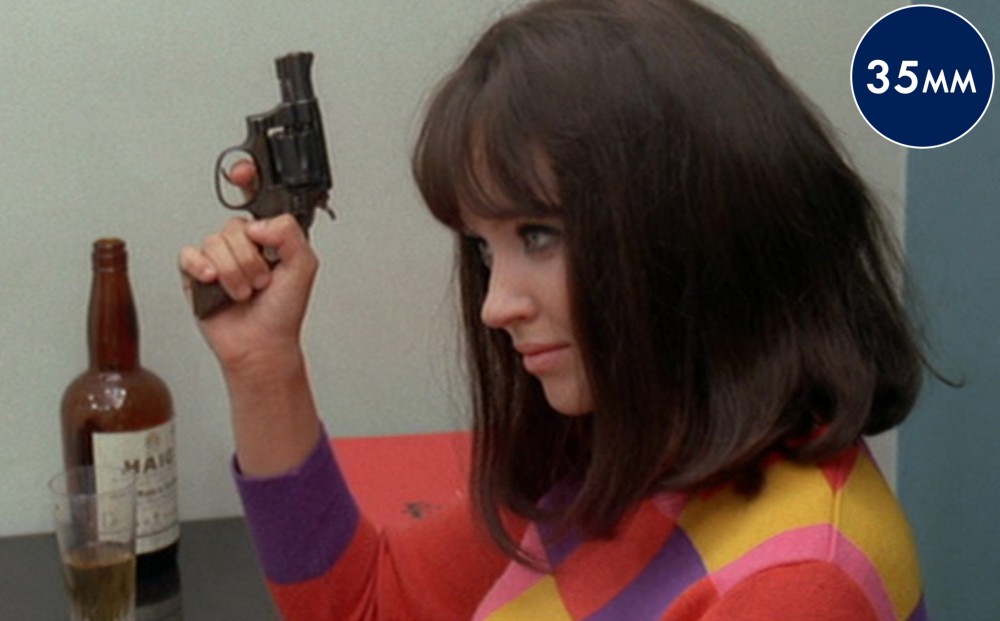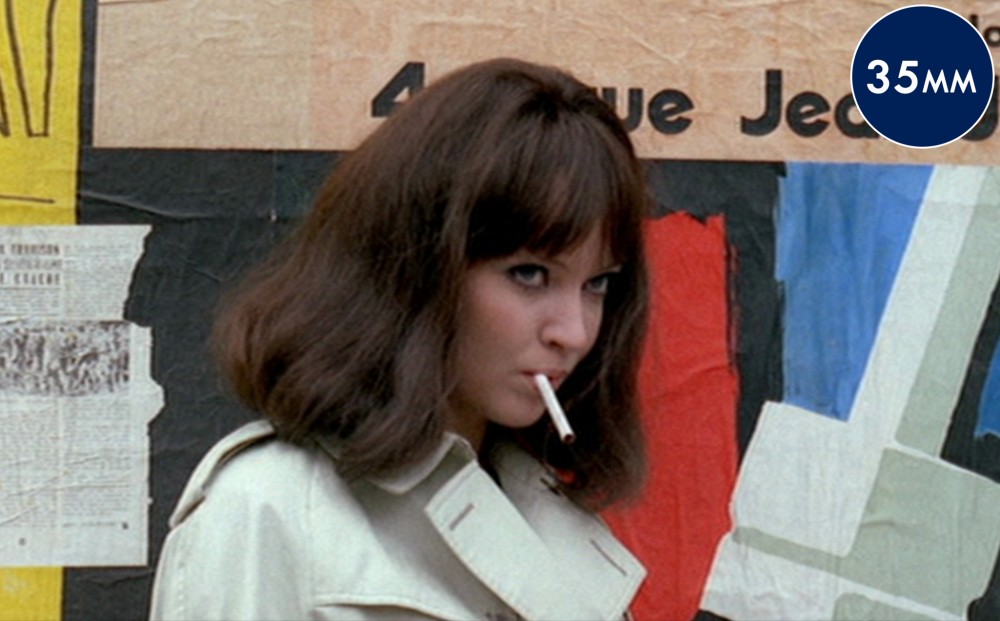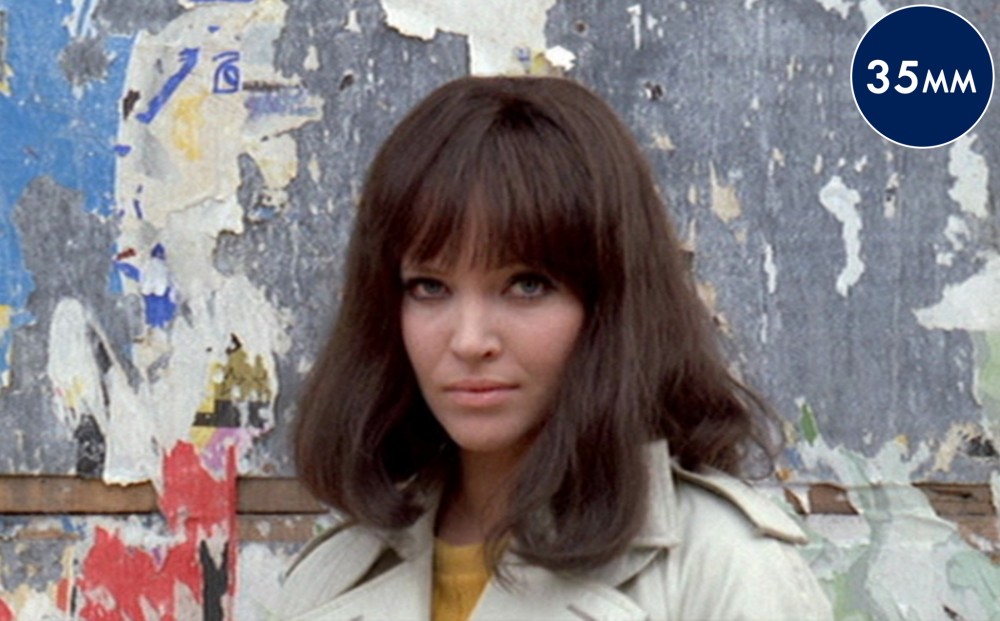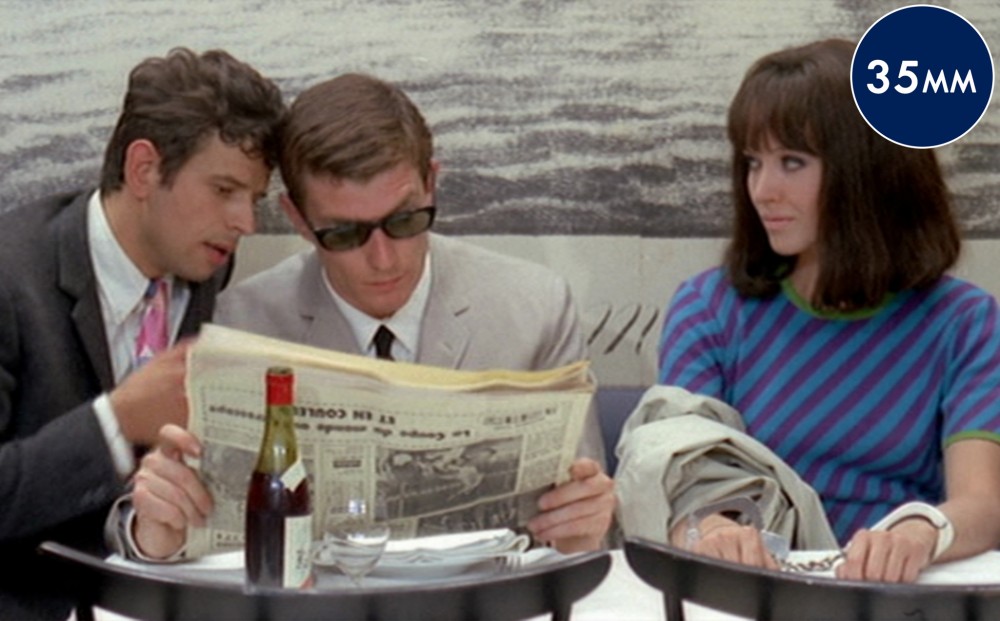MADE IN U.S.A
6:00
Wednesday, January 29
(1966, Jean-Luc Godard) “Walt Disney with blood.” Trench-coated Anna Karina arrives in Atlantic City (apparently a provincial French town) to track down boyfriend Richard P… (phone, plane or car noise constantly blot out the last name), only to find… And then the bodies start dropping, amid encounters with the mysterious, height-challenged M. Typhus, his nephew David Goodis (a character, not the Shoot the Piano Player author), Goodis’s singing Japanese girlfriend Doris Mizoguchi, characters named “Richard Nixon” and “Robert McNamara,” while being shadowed by Jean-Pierre Léaud and Lászlo Szabó’s “Paul Widmark,” with a break for Hegelian bull session in a bar, punctuated with the real Marianne Faithfull warbling “As Tears Go By.” Made as a favor to his cash-strapped producer Georges de Beauregard, and filmed simultaneously with Two or Three Things I Know About Her, this ostensible adaptation of a story by American crime writer Donald Westlake was Godard’s farewell to his muse/ex-wife Karina, never filmed more glamorously, as she changes from one colorfully Mod ensemble to another, posed against starkly colored backgrounds and shot (by New Wave legend Raoul Coutard) in a succession of giant, haunting close-ups. But it’s simultaneously an extremely metaphorical and narratively disjunctive treatment of the notorious disappearance/murder – still unsolved – of exiled Moroccan leftist Medhi Ben Barka and Godard’s own way of suggesting a vast Cold War conspiracy. Dedicated to “Nick [Ray] and Sam [Fuller], who taught me about image and sound.” 35mm. Approx. 85 min.
Reviews
“Godard’s hymn to vulgar modernism.”
– J. Hoberman
“The many shots of Anna Karina, with her wide variety of mood – each a different pose, angle, expression – serve as a catalogue of remembrances. The close-ups are the most expressive ones in color that Godard has made to date.”
– Richard Brody
“The chance to see Made in U.S.A. on the big screen again provides an opportunity to rescue movie art and revive film enthusiasm.”
– Armond White, New York Press
“Godard continually cuts the ground out from under our feet… every narrative element is analyzed to tiny movements, and then recomposed, somewhat in the manner of classical Cubism. There are sequences like mosaics gone mad.”
– Richard Roud




